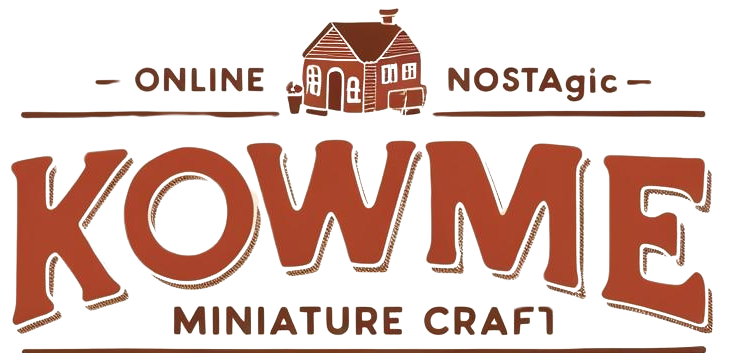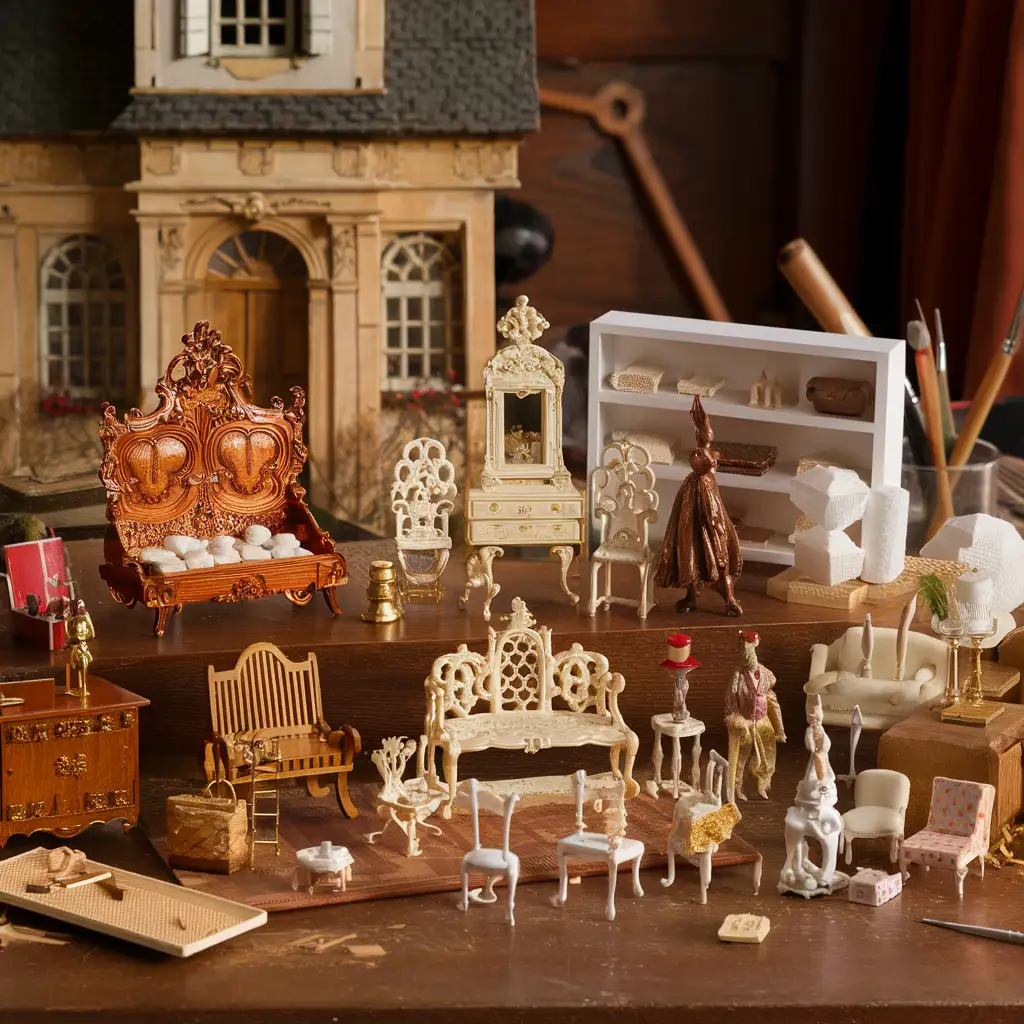Dollhouse furniture has captivated collectors, hobbyists, and history enthusiasts for centuries. These intricate miniatures are far more than just toys—they reveal a fascinating story of cultural evolution, craftsmanship, and societal values. By exploring the history of dollhouse furniture, we uncover how these tiny treasures transitioned from symbols of wealth among European nobility to cherished collectibles and playthings in modern homes.
The Historical Origins of Dollhouse Furniture: A Symbol of Prestige
The roots of dollhouse furniture can be traced back to 16th-century Europe, where miniature houses, known as “baby houses,” were commissioned by aristocrats and wealthy merchants. These dollhouses were not toys for children but rather elaborate displays of wealth and status.
Craftsmanship and Materials That Defined an Era
Artisans crafted dollhouse furniture using luxurious materials such as mahogany, ivory, and silver. Each piece reflected the prevailing design trends of the time, from the opulent Baroque style to the refined Neoclassical aesthetic. These miniatures were not merely decorative—they showcased the artistry and affluence of their owners.
Education Through Miniature Homes
Beyond their decorative appeal, dollhouse furniture served an educational purpose. Noblewomen used these intricate models to teach their daughters about household management. From arranging furniture to understanding the layout of rooms, these miniature homes were a reflection of domestic life and its central role in society.
The Industrial Revolution: Dollhouse Furniture for the Middle Class
The Industrial Revolution of the 19th century brought significant changes to the production of dollhouse furniture. Advances in manufacturing technology made it possible to mass-produce these miniatures, making them more affordable and accessible to the growing middle class.
Germany’s Role in Revolutionizing Dollhouse Furniture
Germany became a hub for dollhouse production during this era, with companies like Moritz Gottschalk and Christian Hacker leading the way. These manufacturers introduced furniture sets made from cost-effective materials like softwood and papier-mâché. While these pieces lacked the intricate detail of earlier handcrafted designs, they opened the world of dollhouse collecting to a broader audience.
From Collectibles to Children’s Playthings
This period marked a shift in the purpose of dollhouses. Once considered collectibles for adults, they became popular as toys for children. The design of dollhouse furniture became simpler and more durable, reflecting changing attitudes toward childhood and the importance of play in development.
The Modern Era: Dollhouse Furniture as an Artistic Hobby
The 20th century saw dollhouse furniture evolve further, influenced by modern materials and shifting consumer preferences. Plastic became a popular choice, enabling manufacturers to produce affordable and diverse miniature furniture.
Iconic Brands and Changing Styles
Companies like Lundby in Sweden and Renwal in the United States embraced contemporary design trends, offering furniture that mirrored the styles of their respective eras. From mid-century modern to sleek contemporary designs, dollhouse furniture continued to evolve alongside broader aesthetic movements.
A Hobby for All
Dollhouse furniture became a widely accessible art form, attracting collectors and hobbyists from all walks of life. Miniaturists pushed creative boundaries, crafting everything from hand-carved Victorian sofas to 3D-printed replicas of modern furniture. These pieces became not just toys but works of art, celebrating the ingenuity and diversity of their creators.
The Cultural Significance of Dollhouse Furniture
Dollhouse furniture offers more than aesthetic appeal—it provides a lens through which we can explore historical and societal trends. Each piece tells a story, reflecting the aspirations and daily lives of the people who created and used them. For history enthusiasts, these miniatures serve as tangible connections to the past, inviting deeper exploration into the evolution of domestic life, craftsmanship, and design.
Conclusion: The Enduring Charm of Dollhouse Furniture
From the opulent baby houses of European nobility to the mass-produced toys of the Industrial Revolution and the artistic creations of today, dollhouse furniture has undergone a remarkable transformation. Its timeless appeal lies in its ability to capture the essence of the eras in which it was made. For collectors, hobbyists, and history enthusiasts, exploring the origins and evolution of dollhouse furniture is a journey through the intricate tapestry of human history—one miniature chair, table, and cabinet at a time.


